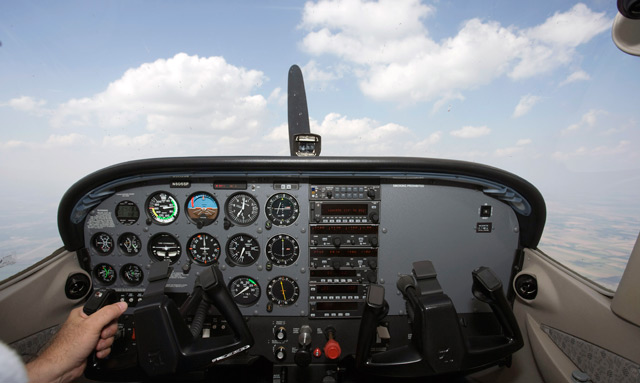Technique: 10 ways to die
Here's how pilots are killing themselves

After reviewing accidents and seeing common themes emerge, aviation medical examiner and CFI Bruce Chien—a medical doctor—has proposed 10 common causes for aircraft getting in trouble. Chien has discussed with FAA officials his belief that requiring new pilots to learn such trends might prevent a large number of accidents that result from pilot error. He has suggested that pilot applicants be required to show knowledge of common accident causes during the oral portion of their test.
Chien works full-time on the FAA’s most difficult medical cases—the ones that take a final determination from FAA headquarters. He has also served on the AOPA Board of Aviation Medical Advisors. Here’s his list. See if you agree.
Pilot needlessly flew into other than air. This includes striking terrain, objects hit (including the runway) after loss of control because of crosswinds, and midair collisions.
Pilot expected performance wildly beyond the capability of the aircraft. This refers especially to high density altitude accidents, including those where there was a clear indication the aircraft was in difficulty. In some cases the pilot aborted the takeoff attempt but followed it with a second or even third attempt before crashing.
Pilot was cognitively impaired. This can include drugs, fatigue, a long duty cycle, or even senile dementia. Instructors may be reluctant to report an elderly client to the FAA, but the family and sometimes even the pilot will be grateful.
Pilot departed with known aircraft deficiency. One pilot had a bad battery and used a power cart to get started for a flight into instrument conditions. He had electrical problems an hour into the flight and made a successful instrument approach but did not have enough power to lower the gear, resulting in a gear-up landing. Some pilots cut corners on maintenance. “You can’t afford to spend one dime more than you have to, but you can’t afford to spend one dime less,” Chien said. “That’s the environment that we’re in.”
Pilot was a scofflaw. This includes the pilot with no medical or flight review, or flying an aircraft out of annual inspection. A noninstrument-rated pilot was discovered using his autopilot to fly at visual flight rules altitudes in solid instrument conditions. “He was a projectile,” said Chien, who personally experienced the incident and requested a higher altitude to avoid the pilot.
Pilot ran out of go-juice (airplanes fly better with go-juice). The AOPA Air Safety Institute says fuel-related accidents continue to be six to seven percent of all accidents. In 2010 there were 85 fuel-related accidents.
Pilot failed to request help. This includes pilots who get into icing problems and know they shouldn’t be there. They refuse to declare an emergency because they don’t want to be cited for a violation of regulations. Air traffic controllers can’t help if they don’t know you have a problem.
Pilot failure to take corrective action. This refers in particular to a pilot who had an 850-shaft-horsepower single-engine turboprop airplane with deicing equipment. He allowed the aircraft to climb on autopilot through icing without activating the deicing equipment, captured a load of ice at 18,000 feet, and spun to the ground. All aboard were killed. It can also refer to the pilot who fails to analyze and react to an impending stall.
Pilot did a (very) poor job with preflight planning. You first need to know there is such a thing as an accident chain. Then you can break it. One pilot with a heavily loaded airplane failed to consider that a hot day and an upsloping runway might destroy his ability to take off. He added one link to the chain. Then he tried to take off two times and had to abort. Now the chain had three links. The third attempt was fatal.
Pilot failed to perform adequate on-ground actions. “Your airplane talks to you for a long time before something fails,” Chien said. “An instructor told me once, ‘Son, you need to shut up and listen to the airplane.’” Those flying the rental fleet can note problems on a squawk sheet during preflight, or watch for problems on the way out to the runway. Chien also believes in preventive maintenance. He had a brake failure in his Piper Seneca at touchdown once, and elected to firewall the throttles and go to an airport with a longer runway where he successfully landed. After that, he decided to replace his brakes at every annual inspection. Now he doesn’t have brake failures.
Chien knows that even memorizing common accident types won’t stop all pilot-error accidents. “The ones who are basket cases—well, we can’t help them with the safe exercise of their liberty. It’s like wearing a motorcycle helmet, for heaven’s sake,” Chien noted.
Email [email protected].


